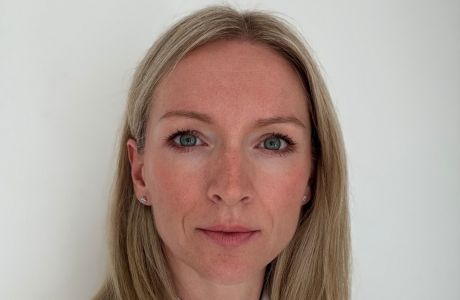
Although lockdowns and Covid restrictions are behind us, the effects of the pandemic can still be seen in today’s housing and mortgage market.
During and since the pandemic, we’ve seen some homebuyers’ and investors’ preferences shift, in terms of not only the type and location of property they want to buy but also how they finance it.
The lingering financial effects of the pandemic, along with the rising cost of living and significantly higher mortgage rates in the years that followed, have made affordability a challenge for many buyers in the post-Covid world.
Bridging can be a good option to secure a property quickly when there is limited supply in the market
So, how has the specialist lending sector stepped in to meet the changing needs of borrowers?
Back to the city
One of the biggest impacts of the pandemic was that people started to re-evaluate where they wanted to live, having been stuck at home for so long.
“Covid changed people’s priorities when purchasing property,” says SPF Private Clients bridging relationship director Laura Toke.
“Being confined indoors made people realise the importance of having space both inside and out, leading to the race for space and a mini-exodus from London.
“However, fast-forward to 2024 and buyers are returning to the capital, perhaps due to increasing pressure to return to the office; but also their focus has changed, with many people now desiring to be back in the thick of it as opposed to a rural location.
For those still benefiting from low mortgage rates, many homeowners have chosen to take a second charge rather than remortgage
“The younger generation want to experience life post-lockdown, and that generally means living in a city, with evidence of those who moved out on a short-term basis considering moving back in,” adds Toke.
The UK Homebuyer Wishlist 2024, a recent study from specialist bridging and buy-to-let (BTL) lender Market Financial Solutions, highlights how borrowers’ priorities have changed since the pandemic.
The survey, conducted in both 2021 and 2024, reveals that the square footage of a property has dropped dramatically in importance for homebuyers, falling from second to seventh place. This may suggest that the desire to move to a larger country home, which was prominent during the pandemic, is fading.
The survey finds instead that buyers are increasingly prioritising either a garage or off-street parking — which moved from seventh position in the rankings to fifth.
Meanwhile, access to transport links rose from 14th to sixth place. This could indicate that, while many buyers still work from home for part of the week, they also need to be able to commute easily to the office.
There has been a steady rise in second charge lending both during and after the pandemic, particularly for debt consolidation and home improvements
Attributes such as how built up the local area is, and access to local amenities, have decreased in importance since 2021, for those buying a home. This could suggest that buyers are getting their ‘urban fix’ by returning to cities or towns for work.
The shift to working from home remains, however, with broadband and mobile connectivity topping buyers’ wishlists in 2024, up from third place in 2021.
Of course, it isn’t just homebuyers who changed course during the pandemic, but investors too.
“Landlords certainly changed tack during and straight after the pandemic, but investors seem to be back to ‘Business as usual’ now,” says Jeni Browne, business development director at Mortgages for Business. “While some trends — for example, the city exodus — have reversed, flats have not seen the same demand levels since the pandemic because people are keen to have gardens and work-from-home spaces.
“Ultimately, landlords will always consider demand by area and property type when investing, and adjust their plans based on available data,” she adds.
We are seeing more clients who not only have adverse credit but also need a lender that is more flexible on income multiples and debt-to-income ratios
The Market Financial Solutions survey shows that gardens and/or outdoor space and proximity to public spaces and parks all ranked highly in importance for homeowners in both 2021 and 2024.
Need for speed
For both homebuyers and investors, the post-pandemic world has resulted in a limited selection of properties.
In fact, 59% of respondents to the survey in 2024 feel there is a shortage of the type of property they would like to own, up from 40% in 2021.
“Bridging can be a good option to secure a property quickly when there is limited supply in the market. It involves no chain and you can usually secure funding faster than for a conventional mortgage,” says Dynamo sales and operations director Tony Field.
As well as homebuyers looking to use bridging to secure an in-demand home quickly — perhaps before their current property has sold — this is also a popular option for investors and refurbishment projects.
“We are seeing an increase in demand for houses in multiple occupation [HMOs] and multi-unit free-hold blocks [MUFBs], due to the increase in rental yields,” says Field.
“Rental stress tests have increased, so HMOs and MUFBs with a higher return are becoming favourable for both landlords and tenants. Landlords are always looking to outperform the market and add value, and a refurbishment project is a great way to do this.
Flats have not seen the same demand levels since the pandemic because people are keen to have gardens and work-from-home spaces
“We’ve seen more and more landlords turn to refurbishing or converting properties as a way of diversifying. This can give them the option to keep the property to rent out or sell on, depending on market conditions,” adds Field.
Brightstar Financial head of sales Gina Blagden says bridging finance can also help investors who are looking to purchase office space, and bed & breakfast-style assets to be converted into residential properties.
“Bridging has the flexibility to allow these clients to purchase these types of assets and complete the necessary renovation/refurbishment/conversion works to increase asset value and rental yield, before seeking longer-term financial solutions such as a BTL remortgage,” she says.
“Also, if the client owns additional property assets, we can raise funds against these properties and, in some cases, this means borrowers do not have to use any of their own cash reserves to fully complete a refurb/conversion project.”
Although not all of today’s affordability challenges can be traced back to the pandemic, affordability for both residential and BTL buyers has undoubtedly become more difficult than it was before Covid.
“With ever-increasing living costs coupled with the aftermath of Covid, we are seeing more clients who not only have adverse credit but also need a lender that is more flexible on income multiples and debt-to-income ratios,” says Blagden.
The younger generation want to experience life post-lockdown, and that generally means living in a city
“Whereas before there was the odd building society that would go up to five or six times income, we are now seeing more specialist lenders come into the market, which enable clients to borrow more money, often alongside having adverse credit — and it doesn’t always need to have been cleared.”
An increased amount of debt has also prompted borrowers to turn to the second charge market.
“On the residential side, there has been a steady rise in second charge lending both during and after the pandemic, particularly for debt consolidation and home improvements,” says Envelop managing director Donna Francis.
“Faced with uncertainty, many borrowers have opted to consolidate their debts into a single, more manageable payment, often reducing their monthly outgoings.
“Additionally, for those still benefiting from low mortgage rates, many homeowners have chosen to take a second charge rather than remortgage; using the funds for home extensions or office spaces, which has become more crucial as home working continues to prove popular.
Covid changed people’s priorities when purchasing property
“Specialist solutions like these have been crucial in providing borrowers with the flexibility and options required in this ever-evolving market, and they are likely to play an increasingly prominent role in the UK lending landscape,” adds Francis.
Although the pandemic led to an increase in the trend to ‘improve, rather than move’, Market Financial Solutions’ survey shows that the ‘potential for extensions and conversions’ experienced one of the biggest falls in importance for homebuyers between 2021 and 2024, dropping from 8th place to 14th.
This could suggest that buyers are focusing their efforts on moving back to a commuter belt rather than chasing the ‘race for space’ in the country.
New strategies all around
The experience of Covid caused many would-be buyers to rethink their priorities, and many investors to reconsider their strategies.
As a result, specialist lenders have had to adapt, providing not just finance to match the changing property trends but also assistance for borrowers who may be struggling financially.
Specialist solutions have been crucial in providing borrowers with the flexibility and choices required in this ever-evolving market
However, there is still a common perception that funding a property purchase can be difficult. In the Market Financial Solutions study, 65% of those surveyed in 2024 felt that obtaining finance to buy a property was stressful.
Nevertheless, there are specialist solutions that can help.
Lenders showed their innovative streak both during and after the Covid pandemic and, with the help of brokers, many buyers’ property goals can be achieved.
READ MORE ARTICLES FROM THIS SPECIAL REPORT BELOW:
Comment: Remaining flexible in the face of predictability and uncertainty



